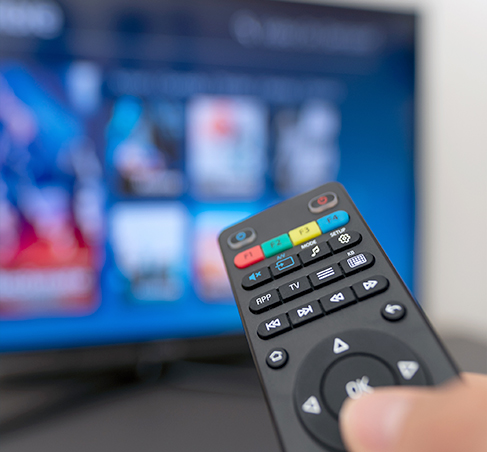The good news for people who live in rural communities like ours — or those who simply prefer the comfort of the couch — is that it’s never been easier to watch movies, shows and musical performances from home. Between online streaming platforms, video subscription services, and a multitude of websites, there is more online entertainment than one could watch in a lifetime.
With its unparalleled reliability, fiber optic Internet is the best option for turning your home into your home theater. The BiG GiG Fiber Network provides download and upload speeds of up to 1,000 Mbps, or 1 GiG. According to CNET, the average household subscribes to an Internet service of 25 Mbps. One GiG is 40x faster than that! Imagine that you’re sitting down with the family to watch a movie, only to find out you have to wait 30 minutes for it to download. Your popcorn will get cold. With a fiber Internet connection, that download takes less than 30 seconds.
Cutting the cable.
One of the best options for combining your home theater with your Internet service is by investing in a Smart TV. You don’t have to worry about turning on anything but the TV when you implement smart technology into your home theater. Most TV brands now include a library of web-based streaming apps like Netflix, Amazon Prime Video, and Disney+. TV streaming services like Sling TV, YouTube TV, and Hulu offer programming and on-demand lineups similar to cable television — for far less money.
There’s no reason you can’t use a combination of any of these services, too, and many households do. If everyone in the family is watching a different streaming service on different devices at once, a fiber Internet connection enables you to watch every show uninterrupted — so you don’t miss a moment of the action!
Get in the game.
If you have family members who are into video gaming, particularly for online server matches, a fiber Internet connection is a must. Perhaps the best feature of fiber Internet is that it supports multiple users on multiple devices all at once. You can stream music in the kitchen, 4K video in the living room, and a game in the kids’ room all without a hiccup.
Beyond the screen.
On top of using your home theater just for movie-watching, you can use your Internet connection to access a wide array of music streaming services. Tune in to platforms like Pandora or Spotify for all your favorite hits. Access news sites, pop on a podcast, or listen to your favorite YouTube channels. Connect those Bluetooth surround sound speakers to your favorite online music platform and rock on!
How much speed do you need?
To get the most from streaming, you need a great Internet connection with plenty of bandwidth, especially if you have multiple people in the home. CNET recommends at least 25 Mbps for streaming clear, HD-quality video content with no lag or buffering. You can get by with less for standard-definition video, but you’re likely to experience lag. And nothing interrupts a climatic, heart-wrenching scene like the video buffering.
It is important to note that the actual speeds to your streaming device are likely to be much slower, especially when using WiFi and connecting multiple devices. The age and condition of each device make a big difference. You may be trying to watch a show on your brand-new Smart TV, but you also have a ten-year-old computer on your WiFi network. This slows the connection considerably. Your WiFi speed will downgrade to accommodate the oldest, least efficient device on your network, which in turn affects the speed of every other connected device. With WiFi being so ubiquitous now we tend to forget that a wired connection is still a thing! Your best speed will always be over a wired, or ethernet connection, so when you are looking to beat your best score in Minecraft, wire it up!
Once you incorporate a reliable fiber Internet connection into your home theater setup, the boundaries between you and all online streaming content are virtually removed. Between streaming services and digital movie libraries, you can access watchable content at any time, day or night, even during high demand and peak periods.
